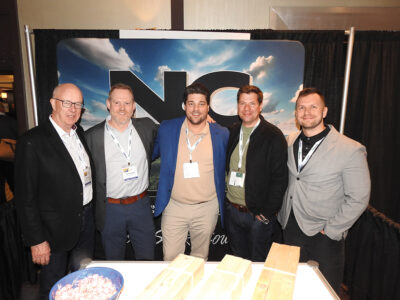At the time of this writing lumber futures have dropped to their lowest in over nine months, even with curtailment announcements from some Canadian producers due to unrelenting forest fires. Simultaneously, specialty wood producers are grappling with ever increasing mill pricing due to a shortage of building materials catering to a strong demand from U.S. homebuilders, creating a topsy-turvy marketplace for North American manufacturers. The following is what a few West Coast producers had to say:
Chelsea Brown of Patrick Lumber, Portland, OR said, “Customers are optimistic, there are still supply challenges outside of commodity lumber for a number of reasons: fires, tariffs, log shortages, protests, labor. Demand stays strong for specialties, and it could take 1-2 years to catch up. Transportation has improved minimally, there are probably 67 loads per 1 flatbed truck as opposed to 97.5 loads per 1 flatbed truck back in May. Rates are still high, there are driver shortages, which adds more cost to increased lumber prices.
John McDowell of Oregon Industrial Lumber Products, Springfield, OR said, “Doug Fir clears are frozen, 6” is super hard to get and super expensive, prices should be going down but lack of productivity on the mill end is keeping offerings scarce. Green Doug Fir is still way up, for instance it isn’t unheard of for a truckload of green VG clear Doug Fir to go for $100,000, the market is screwed up. Not a lot a clear Yellow Cedar or tight knot for that matter, there doesn’t seem to be a lot of WRC going around and right or wrong Yellow Cedar seems to follow that.” McDowell continued, “Down stream the distributors level is selling pretty good if they have it, but I sense they are getting weary with contractors and builders giving up on some new jobs and not able to finish jobs started months ago. Trucking is still very hard to find, we have loads sitting long past pick up times because of lack of transportation. Labor is ridiculous, I’ve given the green light to hire as many people as possible, we’ve hired two since January and I’m not sure they will stick around.” McDowell concluded, “It is really hard to anticipate what is going to happen in the fourth quarter, there are so many unknowns, you can make plans even with negative info, but it is hard to predict anything going into Winter blind. Between mill shutdowns because of air quality, potentially more COVID shutdowns, unsettled tariffs, high prices from the mills that may not come down if the fire season drags on longer than usual, who knows.”
Dean Garofano of Delta Cedar Specialties, Delta, BC said, “As we make our way through the summer doldrums of August, SPF lumber pricing has come full circle in the last nine months. We saw lumber go from $500/m at one point in October 2020 all the way up to nearly $1700/m by May; followed by the current slide which brings it all the way back down to $500/m today. The Cedar market also had an incredible run, in pricing this past year but has not seen the same decline as the SPF market. Cedar decking prices have fallen rapidly from their spring highs and timbers have been lackluster, but most other Cedar items have remained firm or slightly up. The wild ride for markets can be attributed to supply constraints finally catching up and at the same time, economies opened, allowing people to travel and spend their time and money in other areas.” Garofano continued, “Predicting the future pricing trends is going to be difficult with so many market dynamics at play. Most economists agree that lumber demand will be strong in 2022 and should outpace supply until we see many of the U.S. South Greenfield mills complete and ramp up production. Adding to supply issues, B.C. has had the second driest July on record, which contributed to over 300 wildfires raging, an extreme fire rating and a provincial state of emergency. The ripple effect resulted in the shut down of current logging projects for most of July. August’s forecast is projected to be hot and dry, with little moisture, so there is not much relief in site.” Finally Garofano remarked, “Regarding the global pandemic, the Delta variant is surging and leading the way to a fourth wave, while the U.S. struggles to bring their vaccination rates up. Many building projects were put on hold due to the unprecedented high lumber prices and may come back online with prices closer to normal levels now. This November we will see the countervailing duty rate double increasing to 18 percent and the MFPR Fee in Lue will also double to about 12 percent. This past year was unprecedented for our industry and although the wildest part of the ride should be behind us, there are still plenty of reasons to keep your seatbelt on.”









